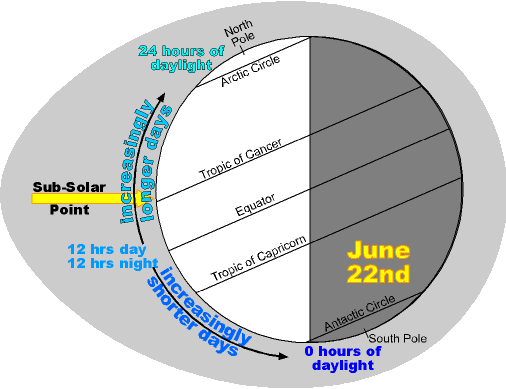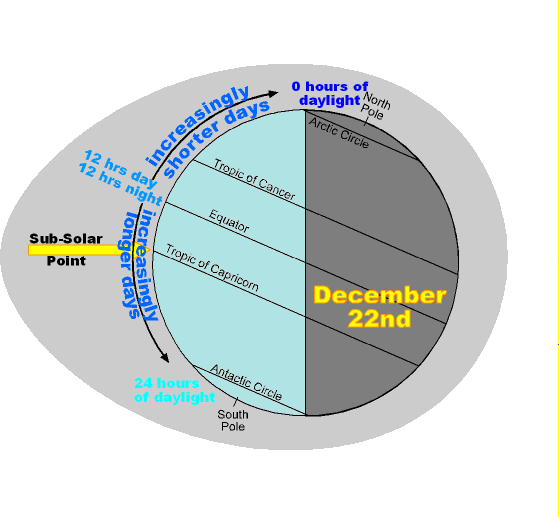Calculating the hours of daylight throughout the year
We define the seasons by the length of the day- during Fall and Winter, the day is shorter than the night; and during the Spring and Summer, the day is longer than the night. The closer you get to the poles, the more pronounced this effect gets (the poles can get 24 hours of light or darkness!), while the closer you get to the equator, the closer the days and nights are to being equal (year-round the equator has 12 hours of day and 12 hours of night). Away from the equator, there are only two times of the year when the day equals the night- the equinoxes!
On these two days of the year, March 20th and September 22nd, the entire planet has exactly 12 hours of daylight, and 12 hours of night. The solstices are the longest and shortest days and nights of the year.
I’ve summarized this in the following table and diagrams:
| date | Arctic circle | North Hemisphere | equator | South Hemisphere | Antarctic circle |
| March 20 | 12 hrs | 12 hrs | 12 hrs | 12 hrs | 12 hrs |
| June 22 | 24 hrs | > 12 hrs | 12 hrs | < 12 hrs | 0 hrs |
| September 22 | 12 hrs | 12 hrs | 12 hrs | 12 hrs | 12 hrs |
| December 22 | 0 hrs | < 12 hrs | 12 hrs | > 12 hrs | 24 hrs |


Practice Questions

